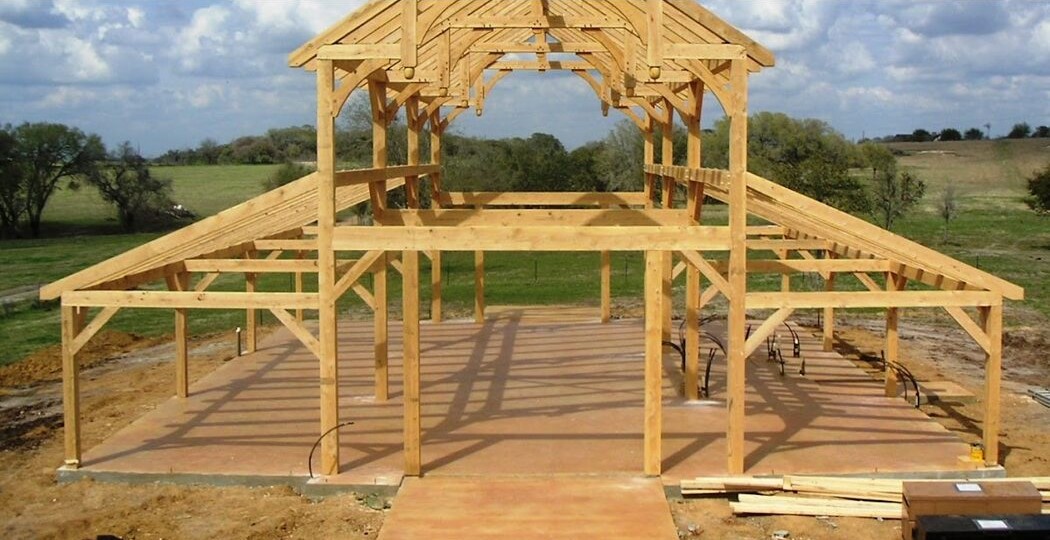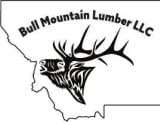When beginning a construction project, choosing the right building method is one of the most crucial decisions you’ll make. The method you select affects not just the structure’s final appearance, but also its longevity, construction speed, and overall functionality. Among the most common construction types today are pole frame construction (also referred to as post-frame construction) and traditional stick built construction. Each option comes with its own distinct features, advantages, and limitations.
At Bull Mountain Lumber LLC, we specialize in pole frame construction, and we understand how vital it is for clients to compare options thoroughly before moving forward. Whether you’re considering a garage, workshop, barn, or even a full residential home, this guide will walk you through the core differences between these construction methods to make the best possible choice for your property.

Understanding the Basics
Pole Frame Construction
Pole frame construction is a building technique that uses large wooden posts buried several feet into the ground to support the load of the structure. These posts are typically spaced farther apart than conventional studs and serve both as vertical support and part of the structural framework.
This method is particularly popular in rural areas, agricultural settings, and for buildings that require wide, open interior spaces, such as barns, storage buildings, commercial facilities, and garages. One major advantage is that pole buildings don’t require a full basement or slab foundation. Instead, the posts are anchored directly into the soil or on piers, significantly reducing the need for heavy excavation or poured concrete.
Bull Mountain Lumber LLC builds every pole frame structure with precision, using quality treated lumber that meets industry standards for strength and longevity.
Traditional Stick Built Construction
Stick-built construction is what most people imagine when they think of a conventional home. It involves framing a structure with numerous closely spaced wooden studs that rest on a continuous concrete foundation. This type of construction is common in residential neighborhoods and is often favored for its architectural versatility.
A traditional build usually includes multiple load-bearing walls, which support the structure vertically and allow for more intricate multi-level designs. While stick-built homes are generally more expensive to construct, they provide excellent energy efficiency and can be adapted to virtually any floor plan or aesthetic.
A Comparison and Key Aspects
-
Foundation Requirements
-
Pole Frame:
Pole buildings use deep-set posts that serve as the structural support system, eliminating the need for a poured concrete foundation in many cases. This not only reduces excavation needs but also lowers the cost of concrete and labor. It’s a simpler, more streamlined process.
-
Traditional:
Traditional homes require a continuous poured concrete foundation, which includes footings and slabs. While this type of foundation is durable and time-tested, it significantly increases both construction time and cost. It also requires favorable ground conditions and more intricate groundwork.
-
Construction Time
-
Pole Frame:
Pole frame buildings are known for their speed of construction. The simplicity of their design, fewer materials, less foundation work, and faster framing mean structures can be erected much more quickly than traditional buildings. This is ideal for customers looking for quick turnaround times.
-
Traditional:
Stick-built construction can take several months, depending on the complexity of the design. The need for precision in framing, roofing, plumbing, and electrical systems can lead to extended timelines.

-
Cost Implications
-
Pole Frame:
One of the biggest selling points of post-frame construction is affordability. The cost of materials and labor is typically lower, making this a preferred method for budget-conscious projects. At Bull Mountain Lumber LLC, we provide affordable pole frame construction without sacrificing quality or durability.
-
Traditional:
Higher material costs, the need for subcontractors, and extended build times contribute to higher overall expenses in stick-built homes.
-
Design Flexibility
-
Pole Frame:
Due to the wide spacing between support posts, pole buildings offer large open interior spaces without the need for load-bearing walls. This creates flexibility for interior layouts, storage, and functional designs. It’s especially ideal for workshops, farm buildings, and large garages where open space is a priority.
-
Traditional:
While more adaptable to multi-level homes and custom room divisions, traditional framing does limit open-span interiors unless steel supports are used.
-
Energy Efficiency
-
Pole Frame:
Pole buildings can be well insulated, but the wider post spacing may require additional insulation strategies to eliminate thermal bridging. With the right techniques, however, they can be made highly energy-efficient, particularly for single-story builds.
-
Traditional:
Stick-built homes typically allow for more conventional insulation practices. With tightly spaced studs, it’s easier to install insulation batts, vapor barriers, and other components to boost energy performance. This makes them slightly more energy-efficient in colder climates.
-
Durability and Maintenance
-
Pole Frame:
When constructed properly and maintained over time, pole buildings can last several decades. However, because the structural posts are in contact with the ground, there’s a risk of moisture damage or rot if untreated materials are used. At Bull Mountain Lumber LLC, we use pressure-treated, durable lumber to mitigate these risks and ensure long-lasting results.
-
Traditional:
Traditional homes are known for long-term durability and are generally less susceptible to moisture-related issues because the wood framing is elevated off the ground on a concrete base. This adds an extra layer of protection in the long run.
FAQs
Q1: Can pole frame buildings be used for residential homes?
Yes, with proper planning, pole frame buildings can be transformed into fully functional and comfortable residential spaces. Many homeowners today are turning to pole barn homes for their cost-efficiency and open floor plans.
Q2: Are pole frame structures suitable for all climates?
Pole frame buildings can be designed to withstand various climates. However, for extreme conditions, like heavy snow or high humidity, additional engineering and moisture barriers may be necessary.
Q3: How long do pole frame buildings last?
With high-quality materials and proper upkeep, a pole building can easily last 40–60 years or more. Maintenance, such as inspecting roof panels and treating wood regularly helps extend its lifespan.
Q4: Is it easier to expand a pole frame building?
Yes. The open interior design makes expansion more straightforward. Whether you’re adding more square footage or attaching additional rooms, it’s simpler to modify a pole frame building than a stick-built one.
Conclusion
Both pole frame and traditional construction methods offer compelling benefits. Pole frame construction is ideal for clients who need fast, affordable, and open-layout buildings, especially in agricultural, commercial, or even residential contexts. Traditional construction, on the other hand, remains the go-to for multi-story residential homes with complex layouts and high energy performance.
Ultimately, the best choice depends on your project goals, budget, and timeline.

Why Choose Bull Mountain Lumber LLC?
If you’re considering a pole frame building, there’s no better partner than Bull Mountain Lumber LLC. Located in Belmont, Montana, we’ve built a reputation for excellence in pole frame design and construction. Our team of experienced professionals brings decades of expertise to every project, ensuring durability, affordability, and structural integrity.
From custom-cut lumber to personalized construction solutions, we support our clients from start to finish. Whether you’re planning a garage, agricultural barn, commercial facility, or a pole barn home, we’ll help you bring your vision to life on time and within budget.
Get in touch with Bull Mountain Lumber LLC today to discover how we can help you build smarter, faster, and stronger with our trusted pole frame construction services.

